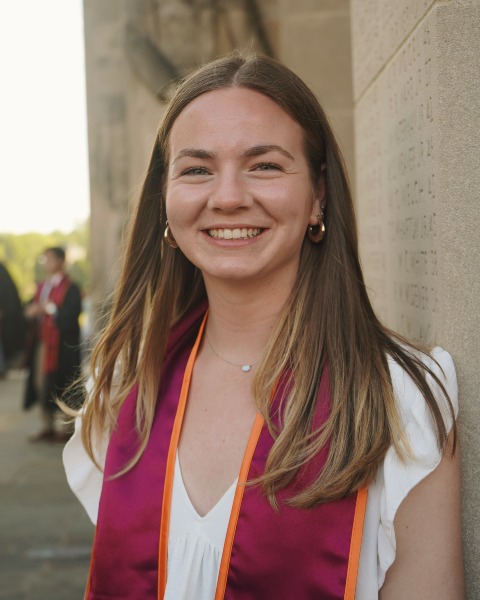Biomaterials
(C-98) Dynamic micromechanical characterization of 3D printed bone organoids manufactured via vat photopolymerization

Elizabeth Hunt
Graduate Researcher
Virginia Polytechnic Institute and State University
Blacksburg, Virginia, United States- SC
Sera Choi
Undergraduate Researcher
Virginia Polytechnic Institute and State University, United States - EN
Emma Nguyen
Undergraduate Researcher
Virginia Polytechnic Institute and State University, United States - AW
Abby Whittington
Associate Professor
Virginia Polytechnic Institute and State University, United States - CC
Caitlyn Collins
Assistant Professor
Virginia Polytechnic Institute and State University, United States
Presenting Author(s)
Co-Author(s)
Materials and Methods:: Porous scaffolds (n=15, 10x10x10mm, 0.5mm avg. pore diameter) were 3D printed (3DP) via vat photopolymerization (VP, Autodesk Ember 3D Printer) with IsoTruss, Truncated Octahedron (TO), and Voronoi lattice geometries using a 50% wt. epoxidized soybean oil acrylate (ESOA) and 50% wt. polyethylene glycol diacrylate (PEGDA) resin. To confirm biocompatibility, scaffolds were seeded with 3T3 fibroblasts (1x105 cells/scaffold) and cultured for 4 (n=2/geometry) and 7 days (n=2/geometry). Cell adhesion and proliferation were visually assessed using confocal microscopy following DAPI and rhodamine phalloidin staining. Dynamic mechanical analysis (DMA, ElectroForce 3200) was performed on the seeded and unseeded (n=1/geometry) scaffolds via cyclic compression using both a frequency and strain sweep to analyze how microstructure impacts the organoid storage modulus, loss modulus, and tan(delta). The frequency sweep began at 0.1 Hz and ended at 10 Hz using a logarithmic scale and remained at a dynamic amplitude of 0.2 mm (4% strain). The strain sweep was conducted at a frequency of 0.1 Hz starting with a dynamic amplitude of 0.2 mm (4% strain) and increasing by 0.1 mm until reaching 1 mm dynamic amplitude (10% strain). All testing was performed submerged in a 1x concentrated phosphate-buffered saline (PBS, pH 7.4) solution at 37 °C. All data was analyzed for descriptive statistics and plotted using Python.
Results, Conclusions, and Discussions::
RESULTS: After 4 and 7 days of seeding, confocal microscopy confirmed successful cell adhesion and proliferation, with cells well distributed throughout all three scaffold geometries. A trend for decreasing storage moduli with increasing oscillation strain was observed for each scaffold geometry, indicating damage accumulation at elevated strain levels. At a 2% oscillation strain, the measured storage modulus ranged from 0.27 to 2.70 MPa, 0.40 to 1.28 MPa, and 0.52 to 2.26 MPa for the seeded IsoTruss, TO, and Voronoi geometries, respectively. At the same oscillation strain, the unseeded IsoTruss and Voronoi scaffolds had similar storage moduli of about 1 MPa, while the unseeded TO scaffold was lower at 0.46 MPa. Compared to the unseeded TO scaffold, the seeded TO scaffolds were consistently stiffer or as stiff at each oscillation strain percentage. In contrast, the relative stiffness of the seeded and unseeded IsoTruss and Voronoi scaffolds was less consistent.
DISCUSSION: All three scaffold geometries resulted in an organoid that promoted cell adhesion and proliferation. Scaffold stiffness varied, with storage moduli on the order of soft fracture callus tissue (fracture callus indentation moduli: 0.5-1000 MPa)4. As such, all three geometries achieved an ideal structural stiffness prior to culture. Despite the limited number of samples available for testing, trends were observed on how seeding impacted scaffold stiffness. Following 3D culture with fibroblasts, the TO scaffolds were the only geometry to have consistently higher storage modulus. However, these scaffolds were the softest overall. Meanwhile, two-fold increases in stiffness were observed in some of the Voronoi and IsoTruss scaffolds after 7 days, suggesting substantial formation of extracellular matrix by the adherent cells. Further testing at extended culture time is needed to determine the ideal scaffold geometry for modeling bone fracture healing.
CONCLUSION: The results of this study represent a successful first step at generating an organoid that recapitulates the micromechanical environment of healing bone. The investigated scaffold geometries 3DP via VP using the novel ESOA and PEGDA resin resulted in successful cell adhesion, proliferation, and extracellular matrix deposition, providing valuable insight into the structure/function relationship of pore shape and bone organoid mechanical properties.
Acknowledgements (Optional): :
References (Optional): : 1. Hak, D. J., et al. Injury 45 (2014): S3-S7.
2. Huang, J., et al. Cells vol. 12,12 1590. 8 Jun. 2023.
3. Lancaster, M. A., and M. Huch. Disease models & mechanisms 12.7 (2019): dmm039347.
4. Leong, P. L., and E. F. Morgan. Acta biomaterialia vol. 4,5 (2008): 1569-75.
